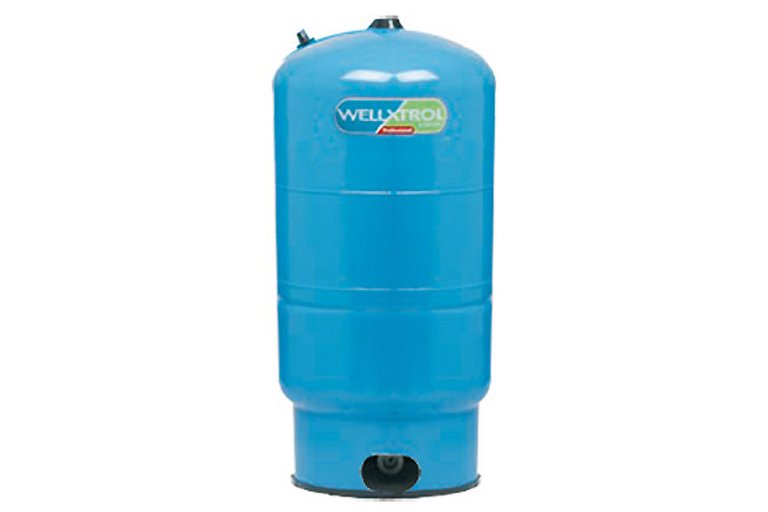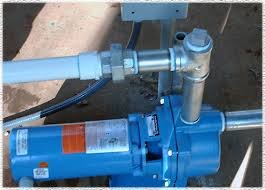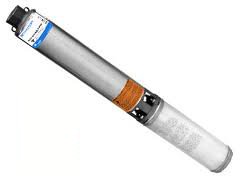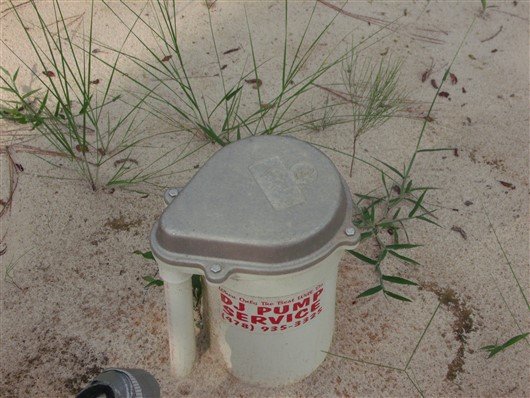We left off on the last post talking about getting a well in for water on your homestead. I wanted to make this post about well pumps and tanks and also the advantage to a pitless adapter for your well and what a pitless adapter is for those that do not know what it is. Pumps for a well can be confusing as there are many out there and many different brands out there also. I will tell you what the well tank is for, as many people think I have a pump to pump water why do I need a tank?

Google Images
Let's start with the well tank! Do I need a big tank or just a small one? That depends on some factors, such as how gallons per minute your pump will pump out of the ground for you or how many gallons per minute your well will produce. We have a 42-gallon tank on our well, so that means we get 42 gallons of water per minute from our pump? No, we tested it out to about 7 or 8 gallons per minute. It is a little extra water in the tank so the pump does not run all the time and it does not wear the pump out so fast. We have our well pressure set at 60 PSI and the pump will shut off at that PSI then when the pressure in the tank falls to 30 PSI the pump will kick on and bring the pressure back to 60 PSI and it keeps going like that until the water is shut off. Most showers only use about 1.5 gallons per minute so it will run for a little bit before the pump kicks on and the pump will stop and kick on again when the pressure falls to 30 PSI. There is pressurized air in the top of the tank and a reservoir of water on the bottom. As the water pump fills the tank with water, it compresses the air in the top of the tank. When the pressure gets to around 60 PSI, a switch turns the pump off. Then, as the water is used, the compressed air in the tank pushes the water out of the tank. When the pressure drops to around 30PSI, the pump switches back on and the cycle repeats itself. All of this is controlled by a well pressure switch that is on your well system. When the tank pressure is reached the points open and shut off the pump and when they close it turns the pump on till it reaches a certain pressure in the tank.

Google Images
There are a couple different types of well pumps. You have a submersible pump, which is in the bottom of the casing of your well. There is also a jet pump which sits at the top of the well and uses a vacuum to pull the water from the ground into your tank. The jet pump will work of your water is 25 to 90 below the surface of the ground. These are used much anymore for the fact that if your water table fluctuates below 90 ft the will not work as the water is to low for them. It is the principle of a straw if the bottom of the straw is not in the water it will not pull any water up. Also if it loses its prime then you will have to have water to prime the pump to get it working again. With the submersible pump, it is in the water all the time and never has to be primed and it can be set in the well to account for the fluctuation of the water level. There are several different brands of submersible pumps, the one that is used the most is the brand name, Goulds, They make pumps for several industries and they are a very good pump. They are not a cheap pump but most well drillers will use this pump of they are knowledgeable of what they are doing. There are several brands of pumps some are Red Loin, Flotec, Simer, and Wayne pumps, just to name a few. In my opinion, Goulds pumps are the best to use in your well.


The pitless adapter is just a way to keep the casing and well pump out of the well house you will build around your tank and your electric connections to the well. It is an easy way to be able to pull your pump from the well without have to move the well house that you built and it makes it easier to service your pump, casing, and the pipe coming from the bottom of your well. It is a simple as that.

Thank you for reading our blog and I hope you have or are learning something from these posts. I hope everyone has a great day/night, whatever it is in your neck of the woods. Please upvote, resteem, and feel free to ask questions in the comments below. I will try to answer them all!





 @steemitbloggers
@steemitbloggers
I have mine set at 40lbs max. 60 lbs seems to be a lot of pressure to run through the water lines. or at least the max.
If you have city water or county water your pressure will be about 60 PSI. For the small house, I have about 200 or so feet of 1 inch PVC running to it. I then went down to 1/2 inch for the rest of it and it is running great so far.
I did the same with 1" down to 1/2" After the pressure tank. which dropping down to half inch will also increase the pressure. Through out the house. I have two full bathrooms and a 2400 ft house. Thank set at 40 lbs. and never a problem. I stay constant between 32 and 40 lbs.
I made the comment because I know that 60lbs is the maximum limits and fitting over the long term have a tendance to give. But then again I am not on copper which would make a difference. also the hardness of the water. I had to install a softening system in.
Just exchanging ideas here. I am by far not an expert in these matters.
We do not have hard water here which is a blessing and I have no copper fittings either. I may go out and turn it down to 50 PSI. I had it high because there will be lots of houses on the well but not right now. It may have to be turned up later but right now I do not need that pressure. I, like you, are learning as we go. I just knew city water is at 60 PSI and the well guys left it there as it was set there in the beginning.
Yea and they blow pipes all the time LOL
Its easier to turn it up then it is to have a problem because its to high. as the demand on water is increased you can always turn it up.
The pressure on my tank is also 40 lbs. it gives a good balance to the amount of water in the tank and air. the more air pressure you have in the tank the less water it can hold.
We use a tank with our pump. The tank is 100 gallon and we have reserve tanks of 2500 litres and 10,000 litres for dry season when we may not have rain for 7 months, sometimes more.
In your situation, that sounds like a good thing to do. Dry seasons can be hard.
When I lived more rural we had a well (it was 330-feet deep) and a holding tank similar to this one. It was already in the 1910's farmhouse I bought and we did upgrade to a larger one a few years after moving in; we had five kids on the house at the time, and the extra stored water was a God-send when it was shower and bath time.
Yeah having a bigger tank can help a lot when there is a lot of water being used. Saves lots of wear and tear on the pump.
I'm glad that I have only dealt with pressure tanks versus holding tanks since from the ones I've seen holding tanks can require a lot more ongoing maintenance to keep them bacteria and algae free.
We had to deal with tanks when we hauled water but they were only 275 gallon totes and a little bleach every now and again went a long way. I know some people that use the bigger tanks because they only harvest rainwater for their use and it is hard when you are climbing in and out to clean them out.
Peace, Abundance, and Liberty Network (PALnet) Discord Channel. It's a completely public and open space to all members of the Steemit community who voluntarily choose to be there.Congratulations! This post has been upvoted from the communal account, @minnowsupport, by Basics To Living (Mike) from the Minnow Support Project. It's a witness project run by aggroed, ausbitbank, teamsteem, theprophet0, someguy123, neoxian, followbtcnews, and netuoso. The goal is to help Steemit grow by supporting Minnows. Please find us at the
If you would like to delegate to the Minnow Support Project you can do so by clicking on the following links: 50SP, 100SP, 250SP, 500SP, 1000SP, 5000SP.
Be sure to leave at least 50SP undelegated on your account.